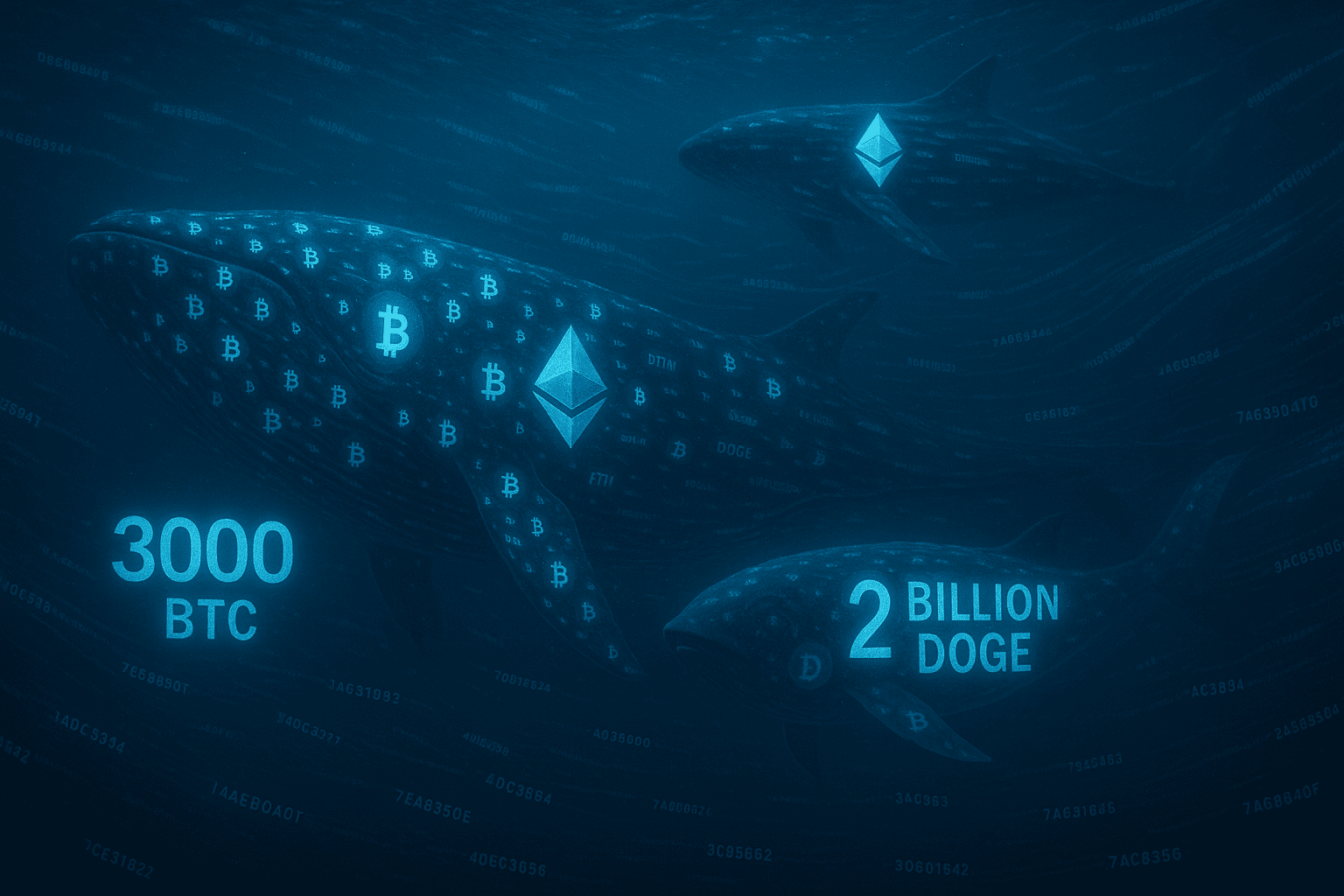
A Bitcoin whale that has been dormant for 5 years suddenly awakens, transferring 3,000 BTC to a new address; on the other hand, a mysterious buyer splurges 500 million USD to acquire 2 billion DOGE. When sleeping whales begin to move and new whales frantically build their positions, on-chain data is telling us an important signal: smart money is rebalancing its portfolio on a large scale.
First, let's talk about that Bitcoin address that has been dormant for 5 years, which still holds 23,969 BTC, valued at 2.8 billion USD. The actions of whales at this level are always worth contemplating. The fact that it hasn't moved for 5 years indicates that the holder is either an early miner or an institutional cold wallet. Now suddenly transferring 3,000 coins at such a nuanced timing—just after Bitcoin hit an all-time high—doesn't seem like panic selling; it looks more like asset allocation optimization. It could be about diversifying risk or preparing to participate in other investment opportunities. The key point is that the remaining 20,000 coins are still inactive, indicating that confidence in a long-term bullish outlook hasn't changed.
The story of Dogecoin is even more exciting. Two billion DOGE were swept up, and the number of whale transactions hit a monthly high with over 100 large transactions concentrated in a short time. This is no longer the action of scattered individuals but rather an organized and premeditated accumulation effort. The timing is quite clever, occurring just after DOGE retraced 30% from its peak. Professional investors know that one can make big money by being greedy when others are fearful. Interestingly, this accumulation wave coincided with Elon Musk starting to frequently mention DOGE on Twitter again, suggesting that there may be insider information behind this coincidence.
Ethereum whales play a more advanced game. A well-known whale liquidated its ETH at 3,794 USD nine days ago, making 1.65 million USD, and then immediately used 4.76 million USDC to buy LDO and ENA. This rapid rotation strategy demonstrates a professional level of trading, realizing profits when ETH peaked in the short term and then positioning in DeFi tokens that have not fully appreciated. LDO, as a leader in liquid staking, and ENA, as a rising star in stablecoin protocols, are both potential targets for the next wave of DeFi trends. This operation indicates that smart money is already preparing for the next stage of the market.
The transparency of on-chain data is a unique advantage of the crypto market, allowing us to track whale movements in real-time. However, interpreting this data requires experience and wisdom. A whale buying doesn't necessarily lead to an immediate price increase, and a whale selling doesn't necessarily lead to an immediate price drop; the key is to understand their operational logic. Current whale behaviors show obvious accumulation characteristics, increasing their positions against the market trend during pullbacks, which is typically a characteristic of mid-bull markets. Historical data shows that when whales start accumulating on a large scale, it often indicates that the next market wave is about to begin.
Of course, following whales also carries risks. Their capital is large, and they can withstand significant volatility, while retail investors blindly following trends may get trapped. However, the behavioral patterns of whales do provide important references, especially when multiple whales operate in the same direction, the certainty of market trends becomes very high. That's the current situation; whether it's Bitcoin, Ethereum, or Dogecoin, whales are actively positioning, which is a rare and noteworthy consistency.


